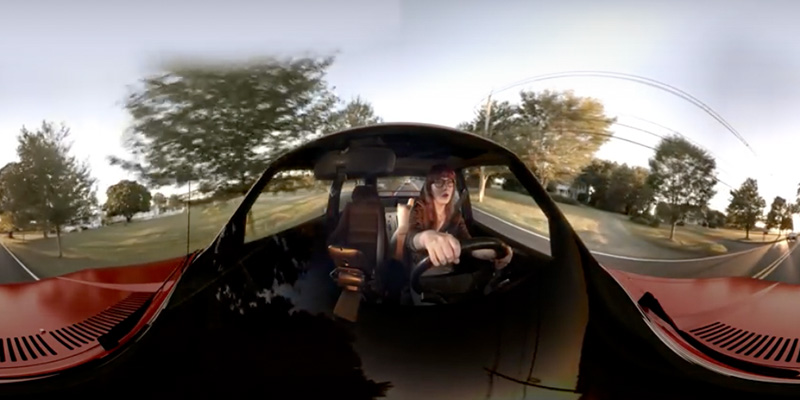
Twenty-seven people die every day from drunk driving crashes in America. With that statistic in mind, you wouldn’t expect alcohol companies, which produce the substance that makes driving so dangerous, to create and promote a virtual reality video warning of the dangers of consumption.
Yet that’s exactly what Diageo, the company that owns brands like Johnnie Walker, Captain Morgan, and Smirnoff, did with “Decisions,” a 360-degree VR drunk driving experience (full disclosure: Diageo is a VinePair investor). It was published on YouTube on Nov. 17, and has since been watched over 700,000 times. The short film, which we watched at the VinePair office using custom cardboard VR glasses Diageo sent, tells a gory tale in which one woman’s decision to drive home after getting bottle service results in a fatal drunk driving crash that kills two new parents and involves a trio of young friends.
At VinePair, we believe alcohol is culture. It’s a way for people to interact, to bond, and it’s shaped human history in irreversible ways. We also acknowledge that drinking comes with responsibility. We believe it’s important that alcohol companies market alcohol’s entire story, not just the fun part.
If you went to high school in the U.S., you probably went through some sort of driver’s education that showed a gory video of a drunk driving accident. Cabrillo, the high school I attended in Lompoc, California, took things one step further with a program called “Every 15 Minutes,” which takes its name from a statistic that someone dies from an alcohol-related driving accident every 15 minutes. The program involves a student being taken out of class every 15 minutes, while the student’s parents read an obituary to the remaining students. Near the end of the day, the rest of the students fill the bleachers of the football stadium and watch a staged drunk driving crash between four students — all covered in fake blood — take place on the field. One student leaves in an ambulance, one in a helicopter, and one in a body bag. The fourth leaves in handcuffs.
It’s a scene that stays with you. And even though this seems like a very efficient means of educating young people, I still know an underage driver who lost his license until he turned 21 for driving under the influence after going through “Every 15 Minutes.” No matter how much authorities try to educate people — from parents to local and federal governments — there will always be those who refuse to listen.
That’s where courageous alcohol companies can make a difference.
It shouldn’t just be liquor companies spending this kind of money and using new technologies for awareness campaigns, either, though for now, Diageo’s Johnnie Walker is alone in its campaign — at least as far as gore goes. The most memorable beer commercial against drunk driving is heartwarming rather than jarring. It’s a Budweiser commercial that follows a man and his puppy as it grows into a dog. The man leaves one day with a six-pack and the commercial stays with the dog as he waits by the window. “For some, the waiting never ended,” flashes across the screen, and then the guy comes home to his dog with the hashtag #FriendsAreWaiting.
Then there are wine companies that treat themselves more like producers of a cultural product than an alcoholic beverage. Imagine opening YouTube and finding an anti-drinking commercial with cutting-edge video produced and marketed by Gallo.
The response to Diageo’s video has been largely positive, except one review by Cherlynn Low in the technology blog Engadget. Low goes from saying “Decisions” will be as “ineffective as any other bad after-school special” at the beginning of her piece, to admitting that she “giggled” during the crash, then ending with the statement that a full VR setup could “leave a more lasting impact.” Overall, though, it’s hard to make an argument against “Decisions.”
Fact: People will drink and drive. But the number of deaths is decreasing. Instead of every 15 minutes in the 1990s, someone now dies every 51 minutes from a drunk driving crash. That’s still an unacceptable number. The best way to decrease that number further is for the companies that are nonetheless marketing to the age group most notorious for drunk driving — 26 to 29 year olds — to take a stand against drunk driving. No one knows the alcohol-drinking public like the alcohol producers.
